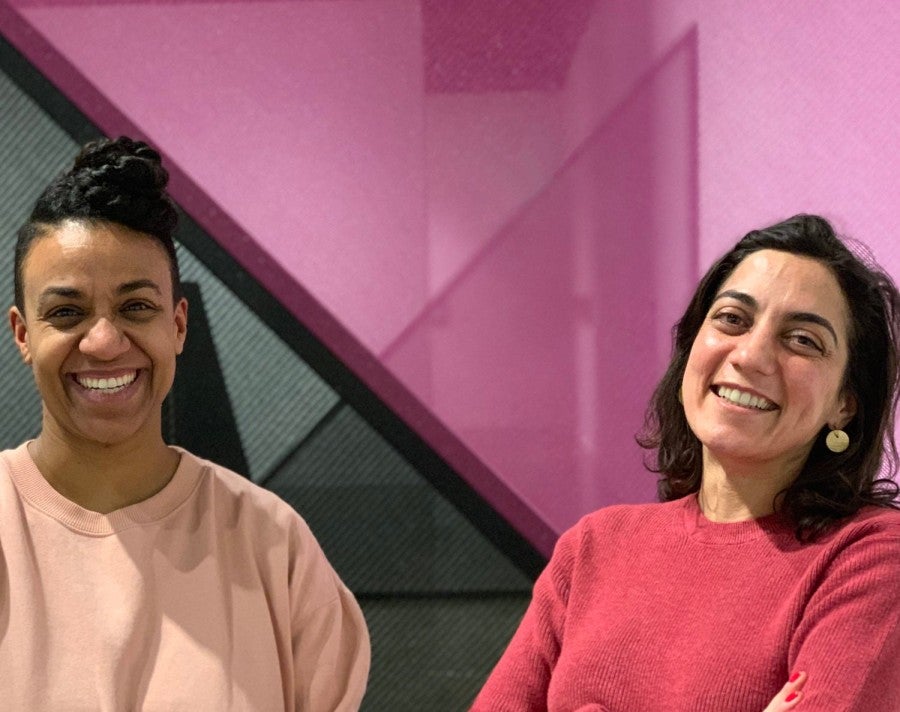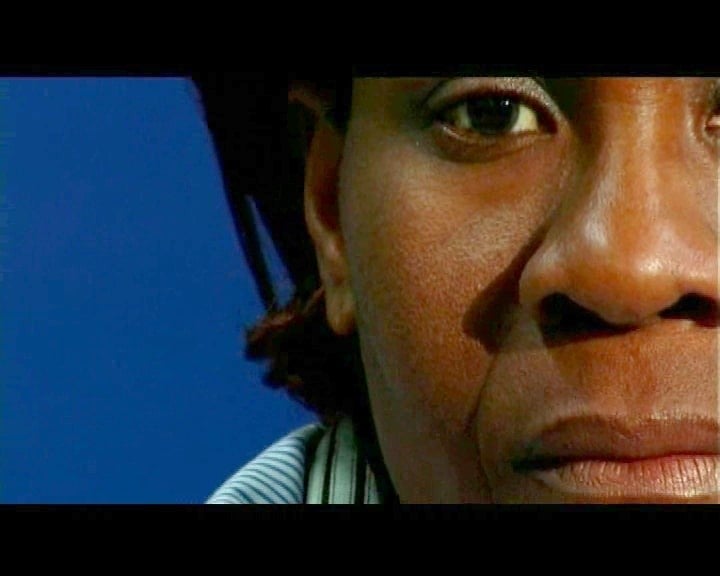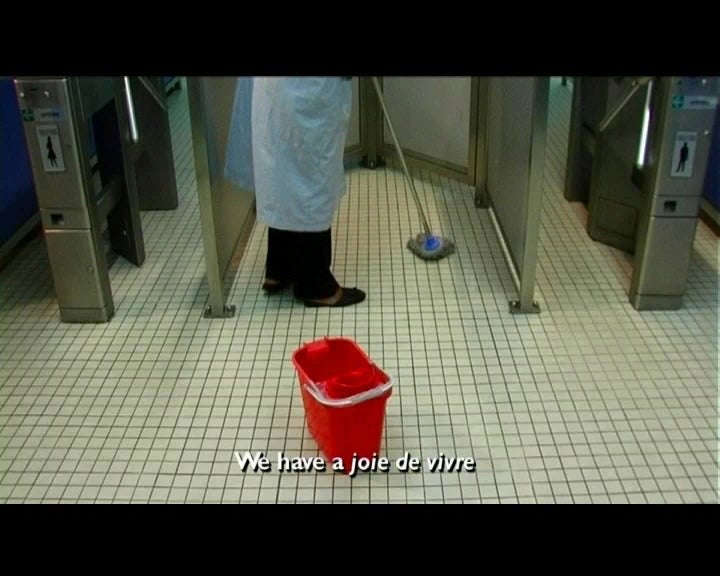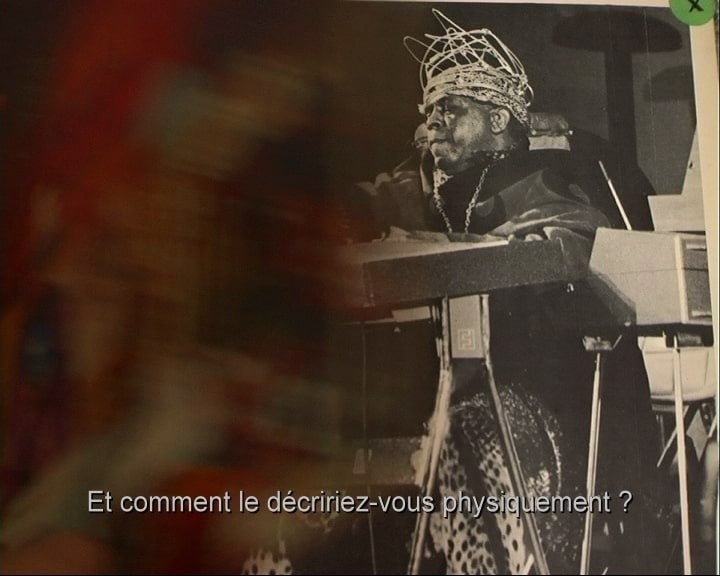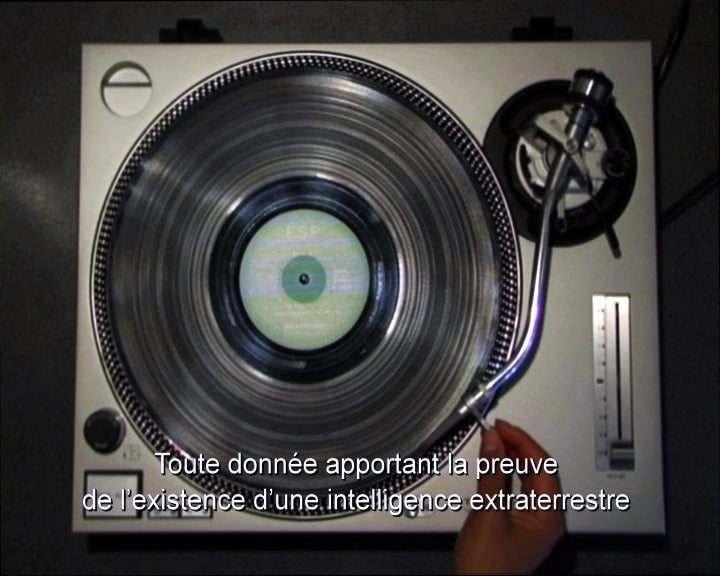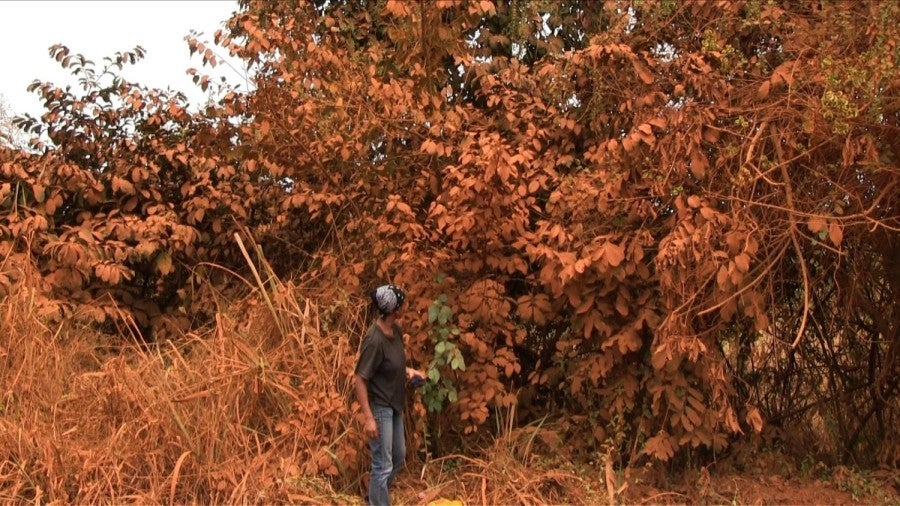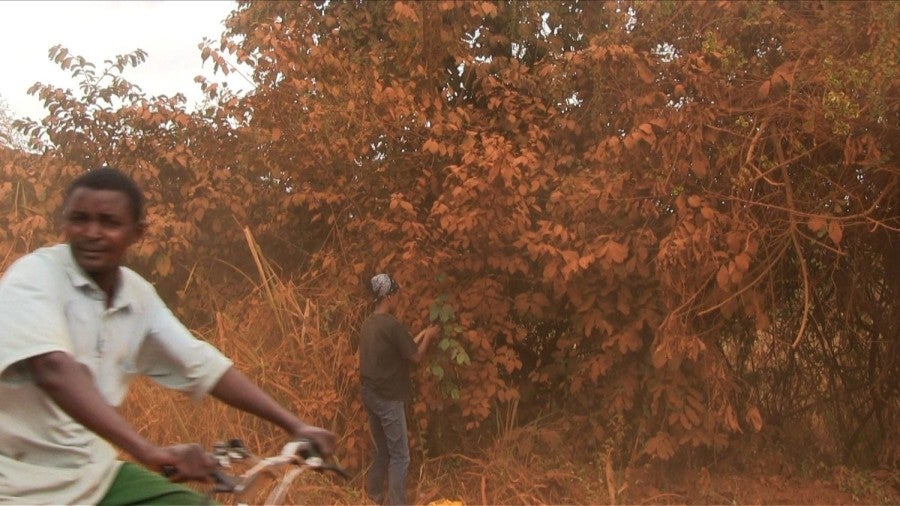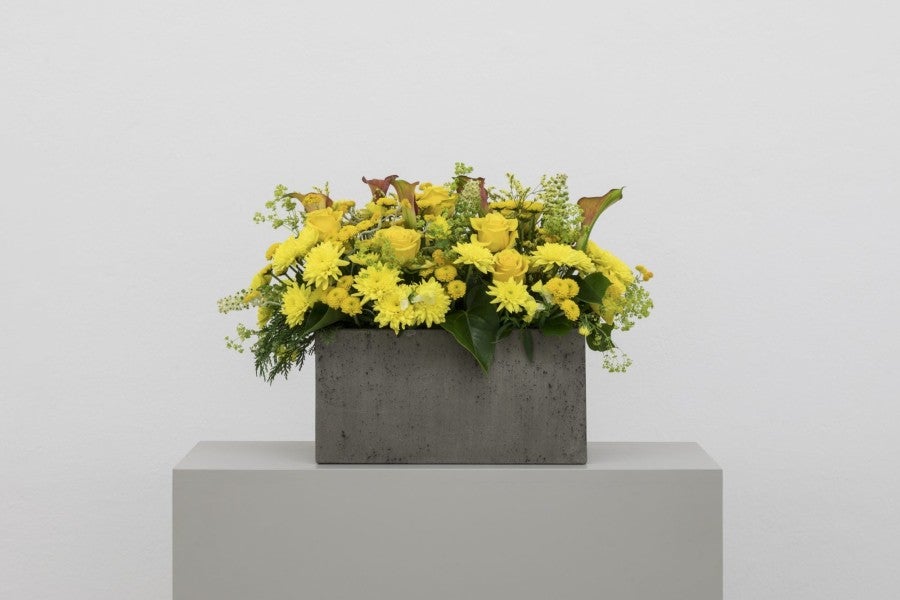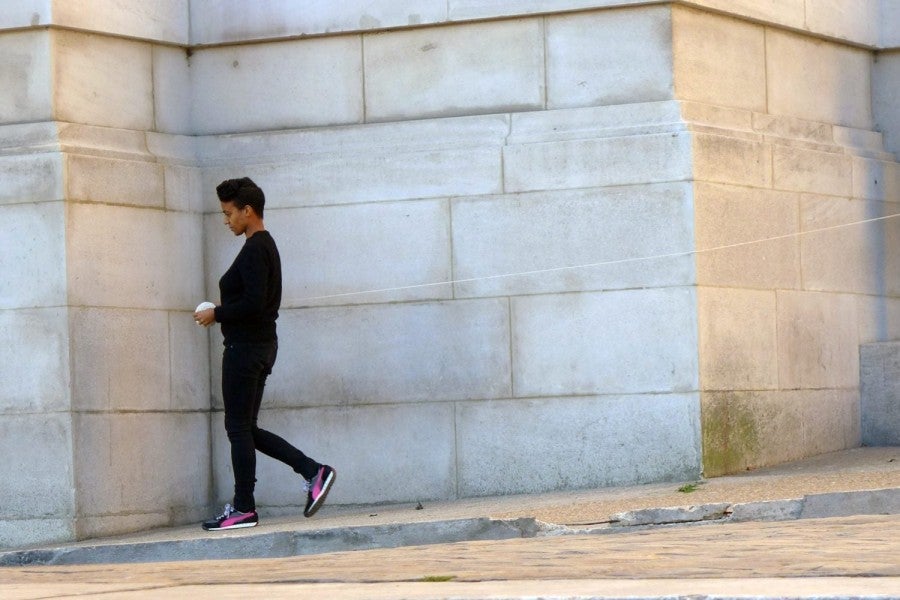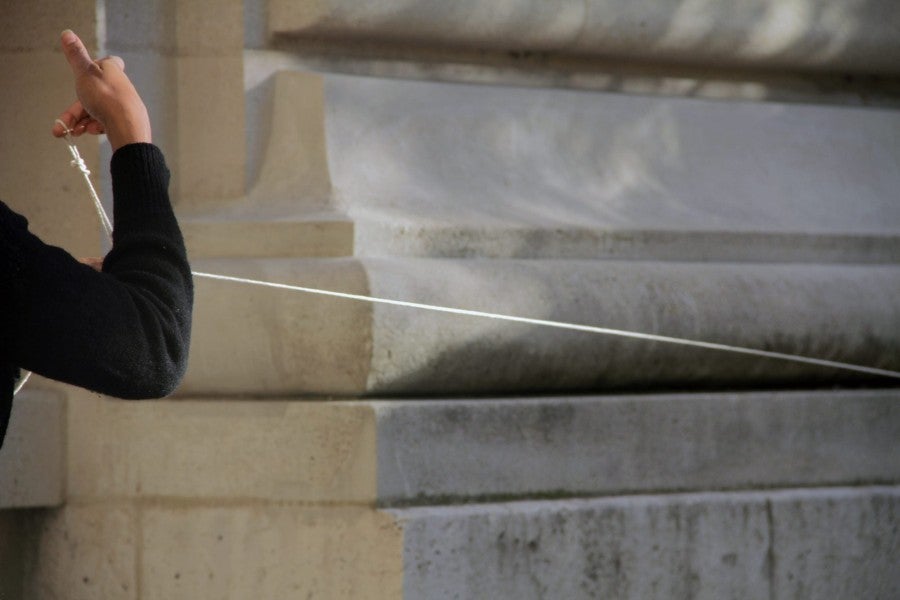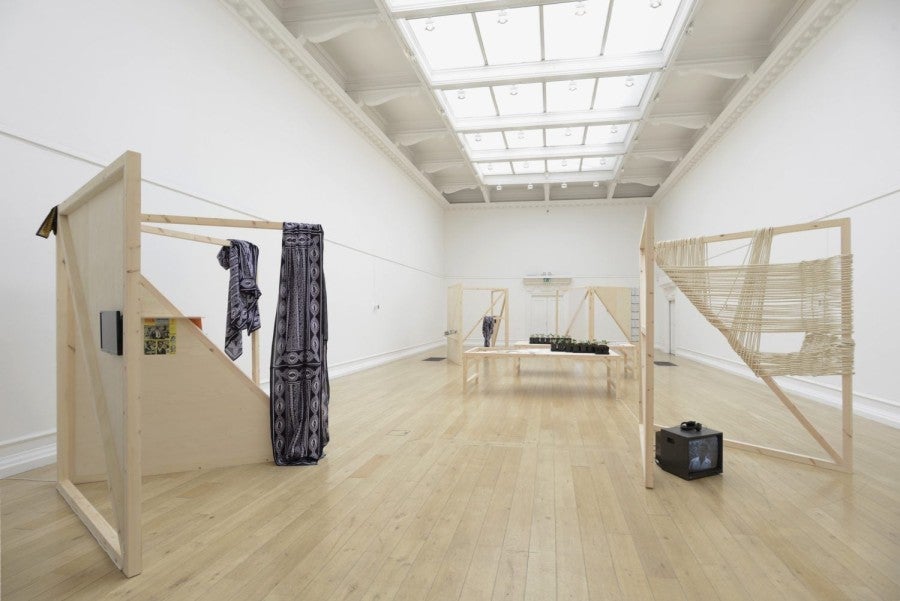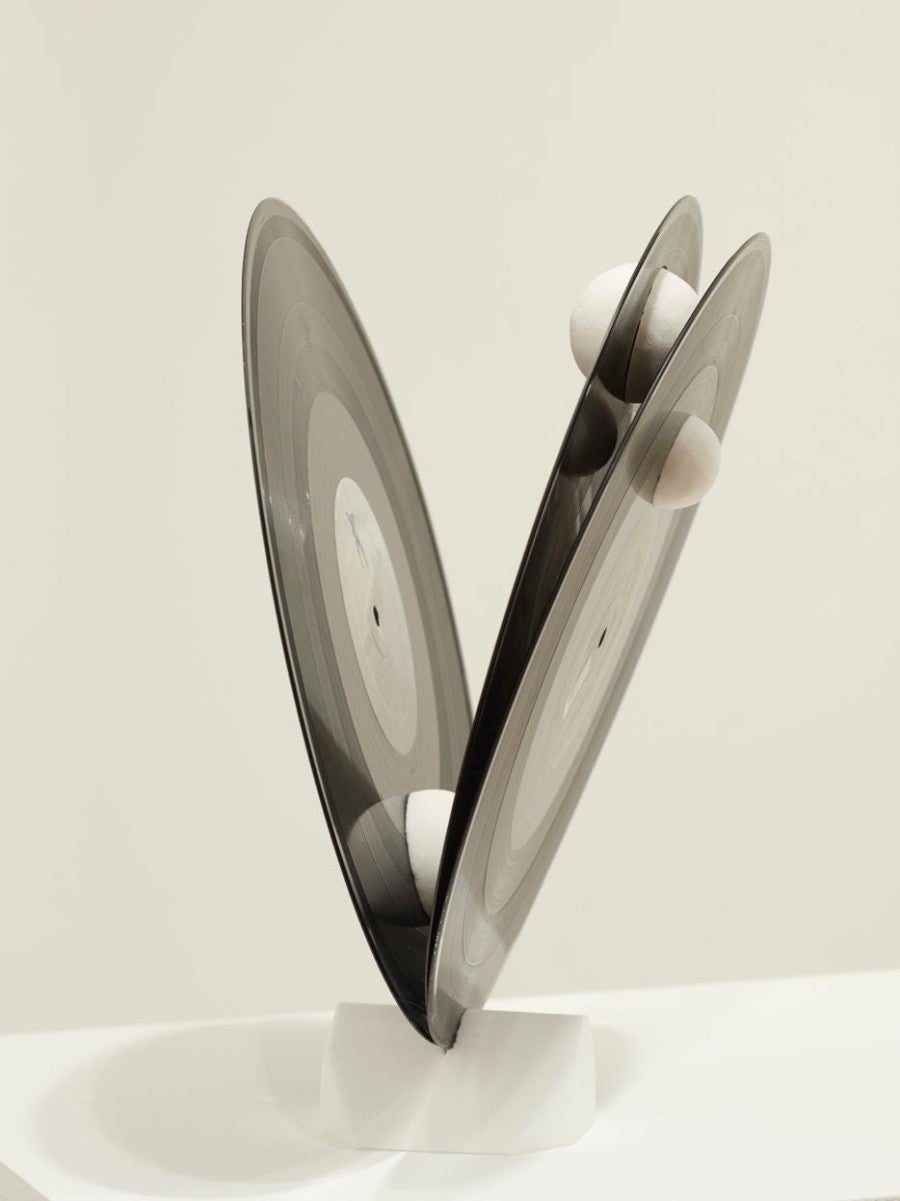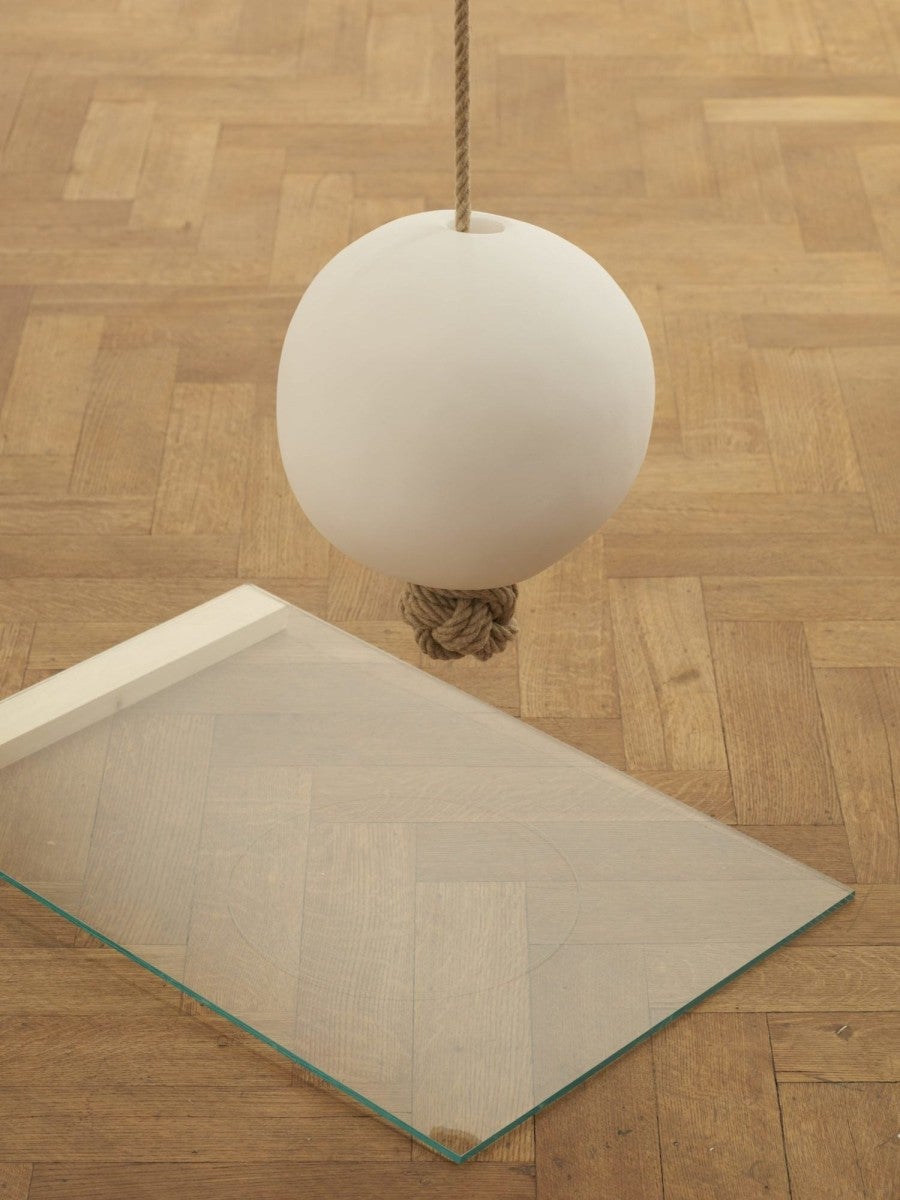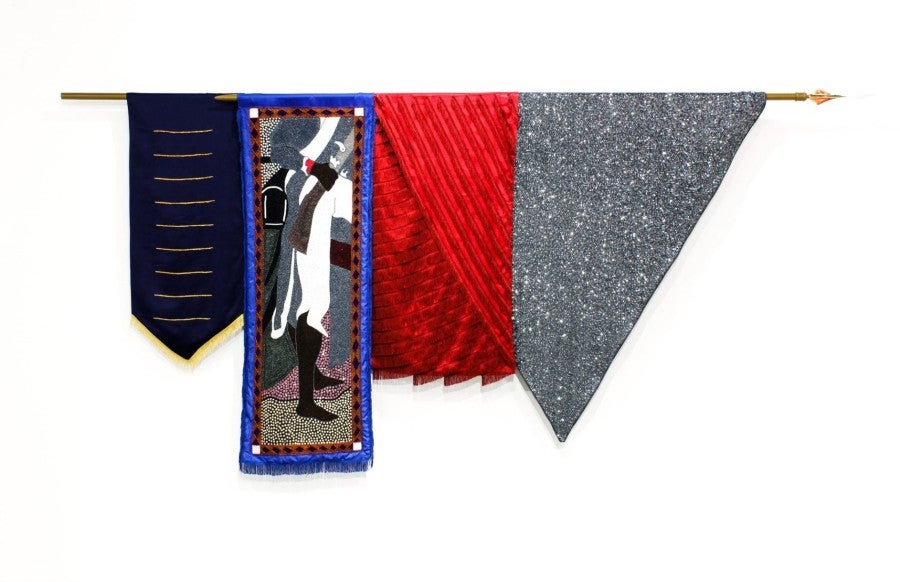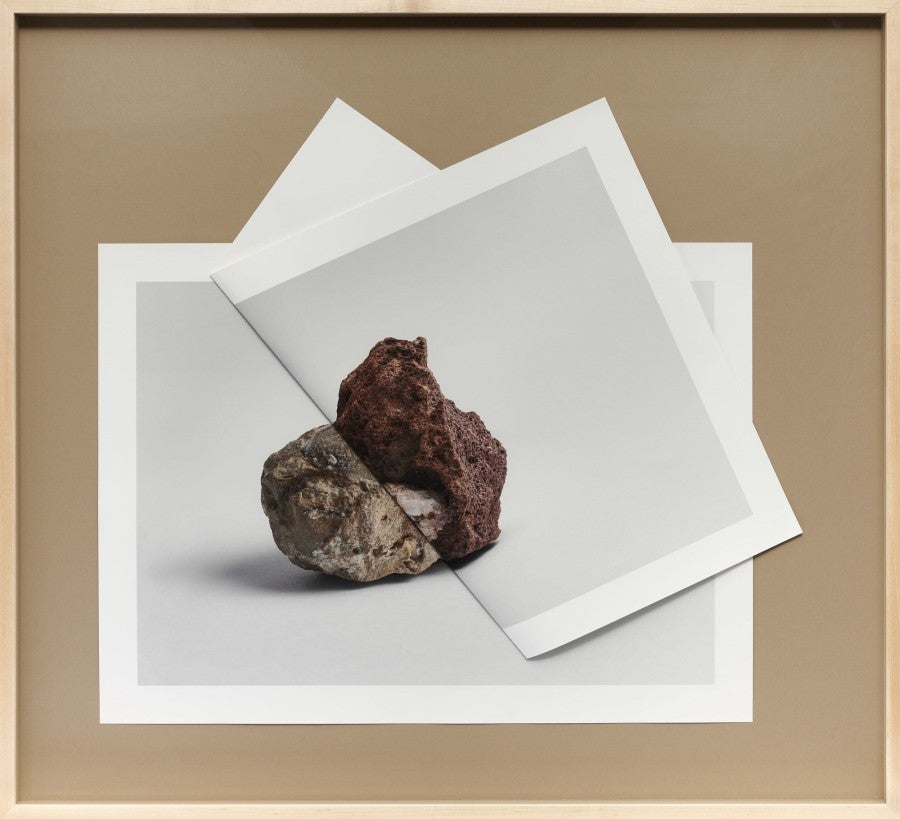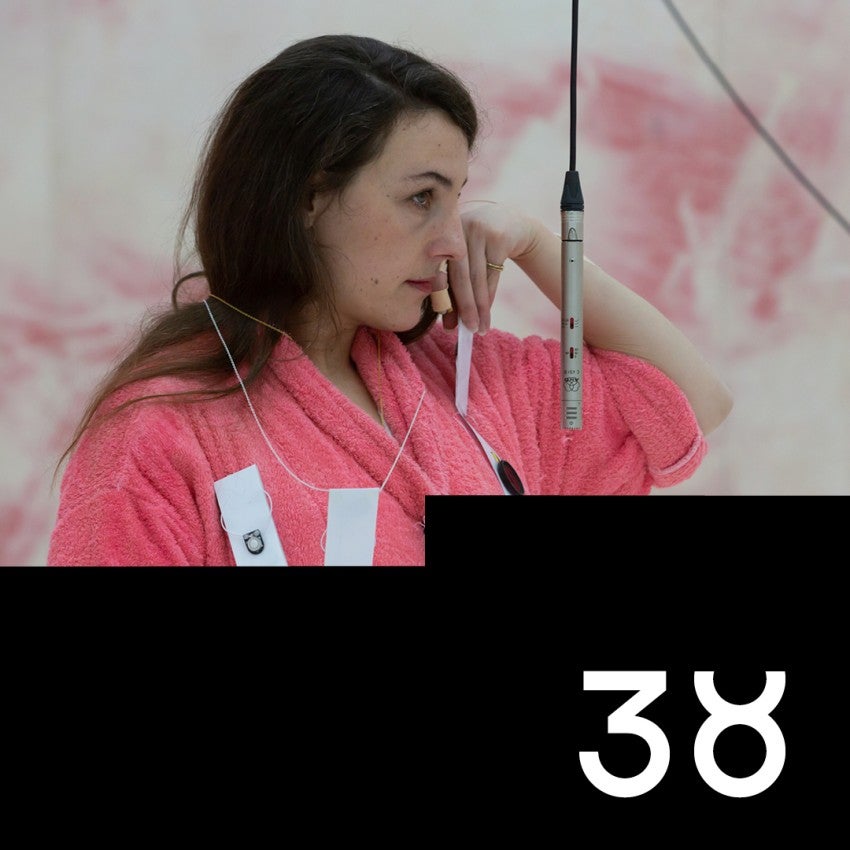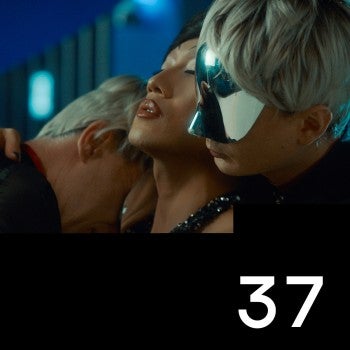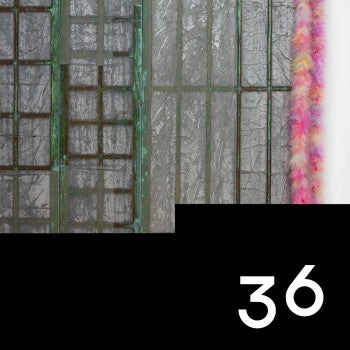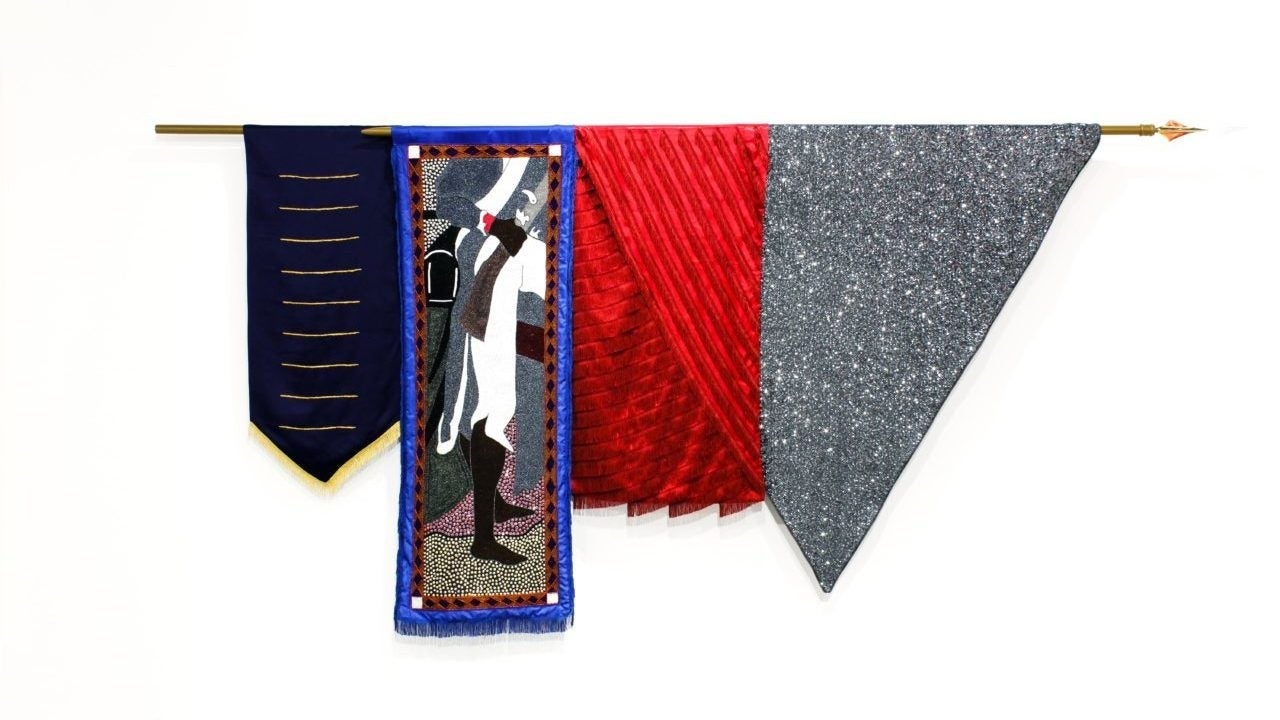
1.
I cannot remember what time of day it was that I was standing outside of Bétonsalon, a center for art and research in Paris. As I write this my memory is straining, trying to reconcile the two cities, Cairo and Paris, that I moved between that summer four years ago. What I do remember was being pensive, standing outside the art space. I was there at the invitation of Kadist to participate in the seminar ‘The Place from Where We Look’, to talk about art and institutions, and the places from where we practice.
A few months later I would be moving to the United States, and, caught between these three places, somewhere in my mind I found myself residing in a fantasy of my own creation. I imagined myself a civil servant, designated with overseeing the task of ceremonial practices of the Egyptian Ministry of Finance (this was after the political coup, an army takeover and much violence; my colleagues and I each had our own way of coping). I stylized myself as an ethnographer, treating the ritualistic paperwork as some insight into political mourning. One need not say more.
This imagination of a parallel life that seemed to merge with mine eventually found its form in fiction. The United Arab World had collapsed, and art as we knew it no longer existed. Time had changed.
That summer day in Paris—and I write this having now consulted the archival material and know that it was 25 June 2015 and that I was standing outside sometime between 6:30pm and 7pm—my colleagues and I were there, following the seminar’s plenary session, waiting for Kapwani Kiwanga to tell A Conservator’s Tale (2015).
“Have you met her?” a friend asked.
“I haven’t.”
“You would like her,” he replied.
Not long after we entered, Kiwanga announced herself to the audience. She was a conservator, in charge of very particular archives. With an air of scholarly confidence, she spun fantastical stories; objects spoke. Her anecdotes were unusual and funny at times. There were video and sound extracts too. Everything was presented in a seamless deadpan.
In as much as she inhabited an alternate world, it seemed parallel to my own: with its universe of narratives, deep-dig searching, and side-stepped relationship to time.
Three years later, I was flying all the way from Boston to Paris to meet her on a Saturday.
2.
Everything was presented in a seamless deadpan.
Kiwanga was born in Hamilton, southwestern Ontario, Canada. She grew up in Brantford, a small settler-colonial city on the Grand River, on the lands belonging to the Haudenosaunee (Six Nations) and the Anishinaabe peoples. This land’s history is something of a hidden one, not immediately visible in Google searches, where contemporary Brantford appears to have a New England charm, a, perhaps expected, inclination towards gentrification, even as it remains a bit run down. Its City Hall is brutalist, and its single contemporary art space, the Glenhyrst Art Gallery of Brant, is nestled amidst a sixteen-acre idyllic estate. It is there that Kiwanga had her formative encounter with art, at an art camp organized by the gallery.
Eventually and inevitably she left Brantford to study comparative religion and anthropology in Montréal while she worked at a local radio station, producing segments on the challenges of single motherhood and women-led agricultural resistance in Kenya.
After university, Kiwanga traveled to Edinburgh, where she produced and directed a number of award-winning documentaries on the life of black Scots: Rooted (2004), an intimate portrayal of two Afro hair salons in Edinburgh; Passages (2004), an 18-minute film on race, privilege and travel; and Bon Voyage (2006), a micro-documentary of an African woman working at the public toilets of the Montparnasse station in Paris.
She then left for Paris, leaving the world of documentary film for that of contemporary art. She enrolled at the École nationale supérieure des Beaux-Arts and later Le Fresnoy, a national studio program in Tourcoing, France. When we met in November 2018 I asked her about this transition. In hindsight, she said, she was grappling to explore something beyond the confines of a single medium or field. Disciplines felt restrictive. She was interested in the “different intelligences” that art has to offer and the possibility of extending her practice to different sensorial modalities.
It was at Le Fresnoy that Kiwanga’s attention also started to move beyond the confines of the earth. She launched The Sun Ra Repatriation Project in 2009, wherein the American jazz composer Sun Ra was returned to his native planet Saturn. The project was formed with imaginative and scholarly rigor, and the research entailed travel to France and the United States, as well as the development of a complex interplanetary communication system. Kiwanga collected oral accounts describing what Sun Ra looked like, and she used those to commission a composite portrait of the musician that, on 16 May 2009, was transmitted through signals into deep space. Although the Sun Ra project was futurist in fashion, there’s a trace of her earlier films in it—of race, privilege and travel.
Around the time of Sun Ra’s repatriation, I myself was returning home, after two years of my own postgraduate soul searching in Sweden. Being in Europe had, among other things, made me question the urgency of art practice in a time of growing political and financial precarity—this was shortly after the financial crisis of 2007/08. I was returning home to Cairo and thinking about what it meant to be “going home,” while also thinking of the place of art against the looming sense of uncertainty. I was occupied with these questions, back then, and also again while thinking about Kiwanga’s works today. In Bon Voyage, we encounter an African migrant worker talking about her life in France with a hint of reminiscence of an elsewhere; and in her first foray into art, Kiwanga sends an Afrofuturist icon ‘home’ to Saturn.
Returning home: we had each done it in many literal and figurative ways. Last year, Kiwanga returned to the Glenhyrst Art Gallery of Brant for the first time to present Clearing, a solo exhibition, of more than just her own work. The exhibition’s premise was to focus on the relationship between indigenous people and the land. Paintings by British-born Canadian artist Robert R. Whale (1805-1887) from the gallery’s collection, panoramic North American horizons reminiscent of European art and its landscapes, were coupled with Landscape Twice Removed (2018), a sound piece Kiwanga herself had composed. Also included was a documentary film titled Six Miles Deep (2009) that looked at a historic blockage of Six Nations’ clan mothers protesting a development on the Grand River. Of her own work, Kiwanga showed Vumbi (2012), a film she made in Tanzania, where her father’s side of the family lives. Vumbi was shot during the dry season in a rural part of Tanzania; the artist, with her back to the camera, wipes red dust off foliage, filling up the screen. The image called to mind a work by Raeda Saadeh wherein the artist stands in the middle of a barren landscape in Palestine and vacuums the land.
3.
The artworks’ afterlife is destined to compost.
In 2011 the world had shapeshifted into repeated political uprising. For a moment, the radical call for a new order did not sound flat; we all had new-found belief. Kiwanga started organizing the first of three “conferences” on Afrogalactica, a sort of proposition on why we needed to revisit Afrofuturism. Born in the 1950s, Afrofuturism drew on science fiction and technoculture, and had been canonical to the African diaspora, its imagination, and beliefs. The first of the Afrogalactica conferences took place in over 35 cities. While speculative, its tenor resounded with Kiwanga’s earlier work witnessed in Paris; voiced through her delivery, it was a performance, without pause, without doubt.
During Afrogalactica III: The Deep Space Scrolls (2014) Kiwanga channeled herself, a galactic anthropologist, from the year 2278 to the present. While I never saw Kiwanga perform this work, I have an understanding of how to travel through time, largely through the instruction of feminist psychic and artist Chiara Fumai (1978-2017) and through learning the techniques of astral projection. Most notably, Kiwanga’s conference addressed important questions on Afrofuturism’s role and capacity to impact the development of the United States of Africa Space Agency (USASA). While it may sound far-fetched to some readers, these questions are rooted in the real. If the Trump administration withdraws government support for NASA’s International Space Station, grounding astronauts in the United States on earth indefinitely from 2025, this makes the need for the USASA (pronounced you-sa-sa) undoubtedly stronger than ever.
Around the time of Afrogalactica III, Kiwanga started designing 53 unique protocols for Flowers for Africa (2014). One of them, Flowers for Africa: Tanganyika (2014) is an arrangement of yellow and green chrysanthemums, yellow calla lilies, and several types of green foliage in a white rectangular pot. This particular bunch stands for the sovereign state that comprised the mainland of present-day Tanzania, and which celebrated its independence in 1964. In each of the protocols, the artist instructs interested galleries on how, with the help of local florists, to arrange bouquets of flowers, on the basis of an arrangement created on the occasion of an African nation’s independence. The project, both transient and ecological, outlines that flowers not be replenished if wilted. In this show, flowers are allowed to dry, and then to rot. The artworks’ afterlife is destined to compost.
Flowers for Africa marks a pivotal moment in Kiwanga’s practice; the whiff of disillusion and doubt marks a certain turn in sensibility. In plain terms, the work, a conceptually dry gesture, deals with the decolonization of African nations. In other ways, it hints at how Kiwanga’s stakes out her own concerns within the institution of art. Flowers for Africa takes issue with the canon of European painting, such as Rachel Ruysch (1643-1706), a Dutch artist and mother to ten who rose to fame during the Golden Years of Dutch merchant capitalism. Ruysch is best known for her adeptness at rendering flowers—wilting, drooping and gnawed at by little insects—in painting. As artists, as mothers, Kiwanga’s and Ruysch’s work—each in their own way—relates to two very different ends of a history and imagination instantiated by the Black Atlantic. Ruysch may have never had a direct connection to Africa, yet her work thrived during a moment in which the Dutch West India Company was setting up its slave trading posts along the West African coast. The imagination of this very moment, this history, makes a comeback in Kiwanga’s own work. More materially considered, Flowers for Africa is an outré gesture of institutional critique, in which the artist launches an olfactory and histamine-inducing attack on the white cube.
This growing concern with art and its institution is evidenced in another event which took place on 14 October 2014. On that day, Kiwanga encircled the Grand Palais with a 1200-meter-long piece of string, periodically stopping to tie a knot. At the end of her action, she spooled the string back onto a small piece of wood—the performance artifact now a work of art. The act of knot tying is best understood as a way of recuperating an ancient technology that resulted in “certain effects:”: once upon a time in Egypt, there were four ways of tying and untying knots, each of which could be used to attain different results: to provide protection, to unleash power, to block evil, and so on. In my own personal appraisal, Binding Ties (2014) is a type of sympathetic magic through which the artist summons the spirit of past actions and other artists who wrap things, such as Christo and Jeanne-Claude. In my world, it would have been around that same time in October, when in Cairo, my friends and I had started talking, at least figuratively, of ‘wrapping up’ the art space Beirut which we had founded several years earlier. The wrapping of, up and one’s head around things, all demand some measure of institutional disbelief.
Many people struggle with the suspension of disbelief. Belief is something that happens on a spectrum; the ability to make associations or have any ideas lies at the lower end of a belief’s line of measure, followed by exercises such as time-spooling, then time travel and finally more complex things like being able to bear witness to an artist’s repatriation to outer space, or being able to intently understand a lecture by a galactic anthropologist from another time. Most people are incredulous when it comes to the proposition that the United States of Africa will soon have its own space station while the United States eventually will not. Revolutions happen, and people take part in them. Afterwards, the very same people question what really happened, and whether they had been there in the first place.
4.
The rebellion was defeated, but nationalism was born.
In an effort to examine belief, Kiwanga turns to history; she investigates archives in Africa and Europe, and travels to Tanzania to research the Maji Maji war. Intuiting that all political uprising is motivated by belief, she looks into the history of this uprising between 1905 and 1907 as a way of understanding the belief mechanisms that led to the popular rebellion of East Africans in Tanganyika, against German colonial rule. The uprising is shrouded in a myth, in which spirit medium Kinjeketile Ngwale sprinkles sacred maji ya uzima water of life on the fighters going to war, cloaking them with invincibility. The rebellion was defeated, but nationalism was born. Kiwanga’s research culminated in several works all produced between 2014 and 2016. Of these works, Maji Maji: fragments of a screenplay (2014) is a multimodal performance, while Kinjeketile Suite (2015) is an installation made from four wooden support-structures for documents, objects and accounts, a performance, and, later, a video presenting an English and Swahili interpretation of a 1969 theater play by the Tanzanian playwright Ebrahim Hussein.
In the aftermath of failing revolution, there is a failing of belief. When revolutions fail, the (re)turn to art over activism is explained away as a retrieval of doubt, tempering loss, dead set against disbelief and nihilism.
Kiwanga’s film triptych Ujamaa (2016) is a redux of two radically reduced and re-edited films, one by Yves Billon and Jean-Francois Schiano from 1976 and another by Jonathan Power from 1977. Ujamaa, Swahili for socialism, family or brotherhood, refers to the name of a village, famously known for Julius Nyerere’s socialist experiment after Tanganyika’s independence from Britain in 1961. After Nyerere, politicians slowly abandoned the core principles of the movement, with poverty and unemployment rising. The spirit of ujamaa rose again with Tanzania’s underground music scene of the 1980s. Kiwanga’s Ujamaa shows only that which is essential, focusing on the gestures and physical labor upon which the experimental socialist project was built. This work, as a restudy of two studies of a social experiment, predicates chance as idea on physical labor—depicted as joyous, working women, men and children ploughing the Tanzanian land.
5.
When we met last November to talk about her work, Kiwanga and I got to talk about Mythopoeia, a group exhibition the artist participated in at Tiwani Contemporary in London in 2015. The first of what the artist calls “sculptural assemblages”, Hydrosphères (2015), is made of three vinyl records, each pierced with a hole of a different size and fitted with a sphere of salt, creating something of a galactic effect. In the second, Koki Doré (2015), ultramarine sequined fabric is knotted by a hanging rope, draping in on itself. Nestling in it at eye level is a conch shell. Koki Doré impresses itself on the imagination as a cloaked shaman or a noosed figure. Mami Wata (2015), the third of the three assemblages, is a sphere of suspended salt hovering just a little above a rectangular glass sheet, with one side lifted very slightly off the ground.
I blinked at the screen where Kiwanga was showing me the assemblages. While I could see the works were unmistakably sculptures, to me something about Mami Wata was suggestive of monuments. I imagined its plaque: Monument to the memory of the unborn children of pregnant women thrown off slave ships in the Atlantic during the Middle Passage. She resisted my hasty insistence on the work’s ‘monument-like’ quality. She didn’t want the work to be too “fixed”. Her series of assemblages is one of several works that engages with vodou mythology and religion that originated in Benin in West Africa. The imagination and the history of the Black Atlantic are of particular importance to Kiwanga, as is the late 1990s Drexciyan myth—of the underwater city home to unborn children of drowned slaves—performed by the Detroit techno music band of the same name.
6.
At the end of my visit in Paris, we parted ways not far from her gallery. It was a Saturday and she was in a hurry to catch a fabric shop before it closed. She was in the middle of finishing Nations (2018), three flag installations made of varying types of fabric, sequins and tiny beads of pearls. The idea for the project first came to her while she stayed in Haiti in 2009 and took part in the syncretic ceremonies of Haitian vodou. Drapo vodou, exquisite flags decorated in beads and sequin and often used in these ceremonies, have been objects sought after by collectors and tourists since the 1950s. In the art world they are best known through Antoine Oleyant’s (1955-1992) work. In early December 2018, I flew out to Miami to see the three works which were being shown by Kiwanga’s Paris gallery Jerome Poggi at Art Basel Miami.
Various parts of the three flags – Nations: for Palm Tree Hill, 1845; Nations, Snake Gully, 1802; and Nations Vertières, 1803 (all 2018) – were made by Haitian craftspeople interpreting Kiwanga’s sketches. The sketches were fragments of 19th-century European paintings of the Haitian revolution. Nations: Vertières, 1803 is composed of four pieces of fabric sewn together and hung horizontally on a mounted flag post. The first panel is a deep navy-blue fabric embroidered with horizontal lines of golden thread. The second panel is made in Haiti and redeploys the Haitian craft-labor in an exquisite interpretation of Kiwanga’s drawing of a fragment of a painting after the popular engraving by Jean-Jacques Frilley, the Battle of Vertières, San Domingo, 18th of November 1803. The result is a tight crop of a Haitian soldier’s leg and rifle in shimmering pearls. The soldier is black. His pants are white, his frock a glimmering grey. His cuff is a small speck of red. The third panel is composed of a piece of red, fringed fabric folded so as to form two right triangles whose fringed lines run together perpendicularly. The fourth and largest panel is a quadrilateral cut of grey sequin, which, when combined with one of the red right triangles in the third panel, forms an equilateral triangle. The historical backend of the works can be beguiling, but what truly works in this flag—but also other flags, and other works for which Kiwanga has received various awards— is the considered engagement of (geometric) abstraction. It is in the smallest of details: how the tilt of the stock of the soldier’s musket is picked up by the downward pointing fringed slant of the blue; how one red panel is precisely draped so as to complete the grey sequin shape, giving us a perfect triangle.
There is poignancy to things that perfectly fit in Kapwani Kiwanga’s practice. In her series Subduction Studies (2015-2017), the artist pairs photographs of rock specimens from the collection of the Muséum national d’Histoire naturelle (the National Museum of Natural History in Paris) and folds them so that they complete each other. The folded pairs of photos conjoin a rock from the coast of Africa and another from Europe, maybe Spain. The work, shrewd in its humor, politically demonstrates the geologic probability of the becoming again of a Pangea Ultima or supercontinent. Europe slips beneath Africa; in 250 million years, migrants won’t drown.
In 250 million years, who knows what will be? Maybe Kapwani does. I will ask her, next time.
Note: The title for this text is inspired by Fit (1994) a film by Athina Rachel Tasangari. In the film, Lizzie is frustrated by things that don’t fit and not being able to fit things together. She wonders about the variety of things in the world that have to perfectly fit inside other things just to get through the day.
